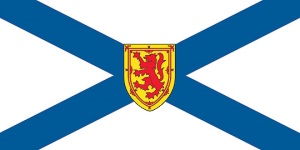Spike in Gaelic Speakers In Nova Scotia Pushes up Demand for Gaelic Speaking Educators
The provincial government of Nova Scotia is advertising for teaching staff "with a high level of proficiency in the Gaelic language". The Strait School Board, who are offering the positions, have a catchment area roughly contiguous with the Gaelic speaking heartlands of northern Nova Scotia and Cape Breton Island. Located in the northeastern part of Nova Scotia, the Centre's jurisdiction encompasses an area of approximately 11,000 square kilometers with a population of 54,972.
This latest move by the Provincial government reflects growing demand for Gaelic Medium Education in the context of the dramatic increase in interset in the Gaelic history of the province and spike in the number of Gaelic speakers.
In 2013 the Cape Breton Post published a letter to the newspaper's editor under the headline "Gaelic Students Ask For Teachers Fluent in the Language". This was a stunning example of the revival of the Gaelic language in Nova Scotia which was home to 100,000 Scots Gaelic speakers in the late 1800's. The students, passionately committed to the revival of the Gaelic tongue in Nova Scotia after decades of malign neglect at the hands of the Provincial government, had taken a stand. The latest action by the Strait School Board is a delayed response to the students demands 6 years on.
In addtion to the limited Gaelic instruction in sate funded primary and secondary schools Gaelic language instruction is also offered to varying degrees at the North Nova Education Centre in addition to advanced programmes conducted at Cape Breton, St. Francis Xavier and Saint Mary’s Universities. The Nova Scotia Highland Village offers a bilingual interpretation site, presenting Gaelic and English interpretation for visitors and offers programmes for the general public. The Gaelic College in St. Ann’s offers Gaelic immersion programs. Sponsored by local Gaelic organizations and societies, ongoing Gaelic language adult immersion classes involving hundreds of individuals are held in over a dozen communities in the province. The grouping of immersion methodologies and exposure to Gaelic cultural expression in immersion settings is referred to in Nova Scotia as Gàidhlig aig Baile. - Wiki
Guarded optimism for the future of the language and culture of Gaelic Nova Scotia is a theme of the landmark study published in 2002 by the Nova Scotia Museum which is entitled “Gaelic Nova Scotia – An Economic, Cultural and Social Impact Study” (Curatorial Report #97) , written by Michael Kennedy. A commanding work of over 300 pages which surveys the historical context of Scottish immigration to Nova Scotia and the Gaelic institutions in Nova Scotia working to preserve and promote the Celtic tongue and culture of the province at the time of publication. In addition, Kennedy’s work goes into an expansive analysis of the unique Gaelic music and dance of the province and ends with an outline of a practical plan for the revitalization of the culture and the language.
In 2018 the Province of Nova Scotia estimate that there are 2,000 Gaelic speakers, concentrated in Cape Breton, representing a dramatic increase in recent years. " Efforts to address the decline of Gaelic language in Nova Scotia began in the late 1980s. Two conferences on the status of Gaelic language and culture held on Cape Breton Island set the stage. Starting in the late 1990s, the Nova Scotia government began studying ways it might enhance Gaelic in the province. In December 2006 the Office of Gaelic Affairs was established."

https://www.transceltic.com/scottish/nova-scotia-edge-of-celtic-world
https://www.ctvnews.ca/canada/nova-scotia-unveils-gaelic-licence-plate-a...
http://www.cbc.ca/news/canada/nova-scotia/nova-scotia-gaelic-licence-pla...






